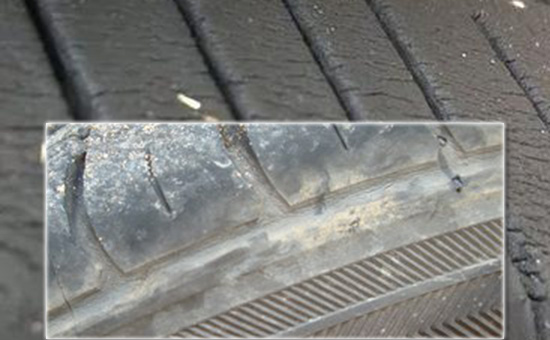
Natural rubber has high elasticity and high strength and is widely used in the production of various rubber products. However, natural rubber has a fatal defect - easy to age, resulting in serious shrinkage of the performance and service life of natural rubber during processing, storage and use. . Then, in the actual application process, what factors will cause the natural rubber to age? What changes will happen after aging?
1. Natural rubber thermal aging
Thermo-oxidative aging is the most common form of aging in the process of storage and use of natural rubber and natural rubber products. The aging is mainly oxidative degradation; generally, the hot air aging at 120 °C for 20 hours, the tensile strength of natural rubber vulcanizate drops significantly. The sulfur in the sulfur vulcanized natural rubber vulcanizate will react with oxygen under high temperature conditions, which will seriously damage the internal cross-linking network of vulcanized rubber. Generally, the tensile strength and elongation at break of natural rubber vulcanizate will be aging. The growth of time decreases, the higher the temperature, the faster the decline.
Therefore, natural rubber products can not be used for a long time under high temperature conditions; when using natural rubber to produce rubber products, it is not possible to blindly increase the mixing temperature and vulcanization temperature to improve production efficiency, and avoid thermal aging degradation of natural rubber or products.
2. Natural rubber ozone aging
Although ozone mainly exists in the ozone layer 20km away from the surface, a certain amount of ozone still exists in the surface atmosphere. The long-term contact with natural rubber products will cause ozone cracking on the surface of the product. This has a lot to do with the saturation of the rubber. In general, ozone reacts faster in unsaturated rubber; the unsaturated double bond contained in natural rubber reacts with ozone, and the alkyl group in the unsaturated double bond accelerates the reaction with ozone. Natural rubber is prone to ozone aging.
In theory, ozone aging of natural rubber is an aging phenomenon occurring on the surface of rubber or rubber products. When the rubber is subjected to tearing or the tensile stress changes above a certain critical point, ozone cracking occurs at the crack. The exposed new rubber will continue to react with ozone, resulting in an increase in cracks from natural rubber ozone cracking.
Understanding the factors that cause the aging of natural rubber is of great significance to further improve the aging resistance of natural rubber. In the actual production and application process, is there any other factor that will cause aging of natural rubber or natural rubber products? What is the specific performance? Tomorrow Xiaobian will continue to share with you the common aging problems of natural rubber.
Exclusive original article [commercial authorization] reprint, excerpt and excerpt in any form are prohibited without written authorization. Focus on Hongyun rubber: learn the process formula and raw material technology of producing rubber products from recycled rubber to help you reduce costs and increase profits